Abstract
Free radicals have been hypothesized to be important mediators of disease in a variety of organs and tissues. Electron paramagnetic resonance (EPR) spectroscopy can be applied to directly measure free radicals; however, it has not been possible to measure important biological radicals in situ because conventional spectrometer designs are not suitable for the performance of measurements on whole organs or tissues. We report the development of an EPR spectrometer designed for optimum performance in measuring free radicals in intact biological organs or tissues. This spectrometer consists of a 1- to 2-GHz microwave bridge with the source locked to the resonant frequency of a recessed gap loop-gap resonator. With this spectrometer, radical concentrations as low as 0.4 microM can be measured. Isolated beating hearts were studied in which simultaneous real time measurements of free radicals and cardiac contractile function were performed. This in vivo EPR technique was applied to study the kinetics of free radical uptake and metabolism in normally perfused and globally ischemic hearts. In addition, we show that this technique can be used to noninvasively measure tissue oxygen consumption. Thus, it is demonstrated that EPR spectroscopy can be applied to directly measure in vivo free radical metabolism and tissue oxygen consumption. This technique offers great promise in the study of in vivo free radical generation and the effects of this radical generation on whole biological tissues.
Full text
PDF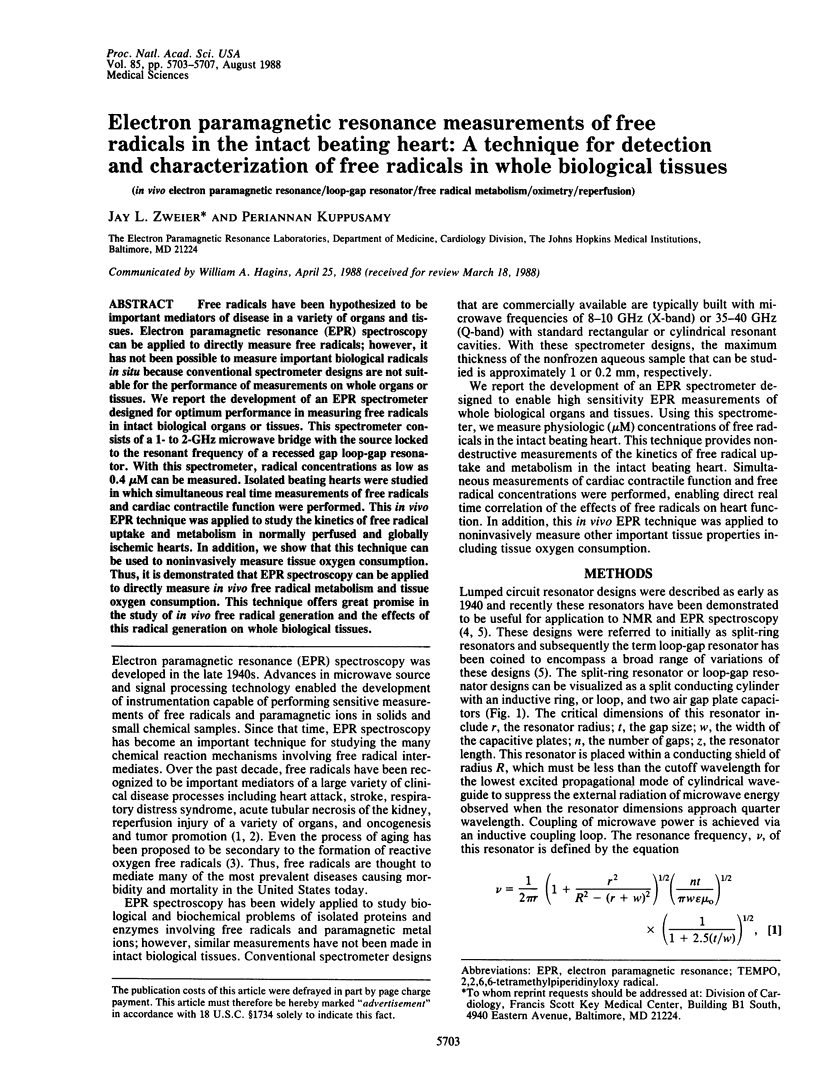
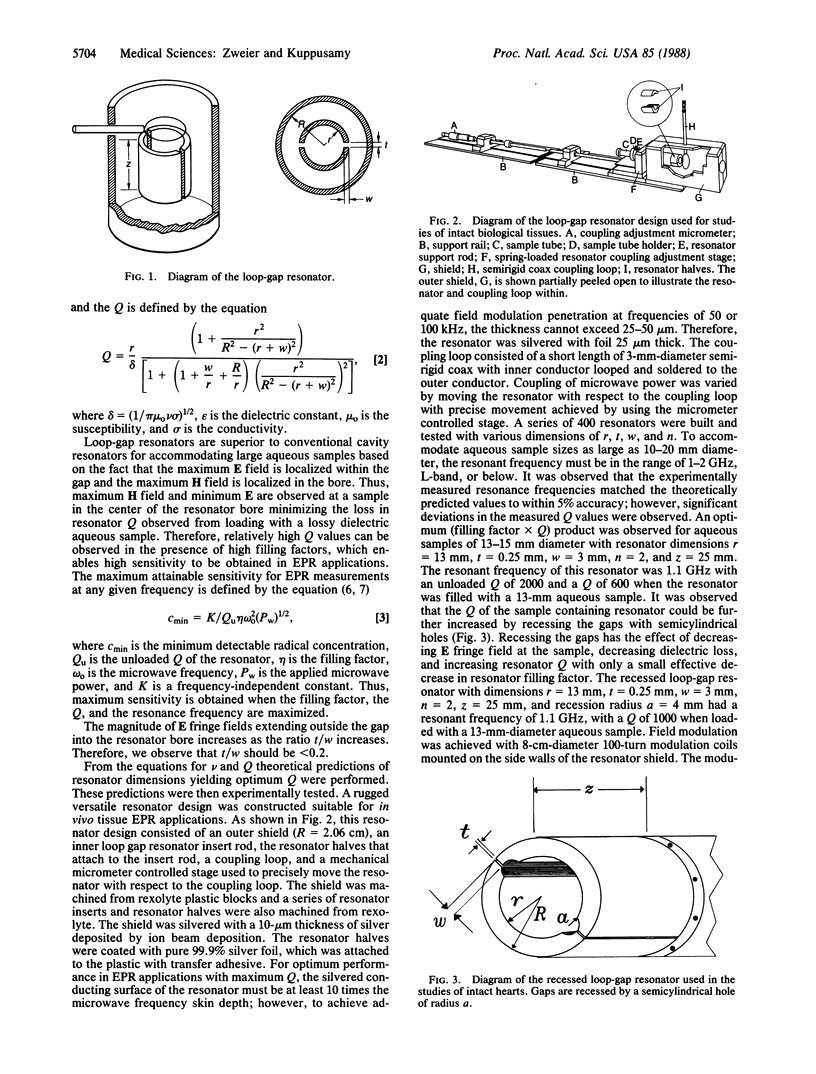
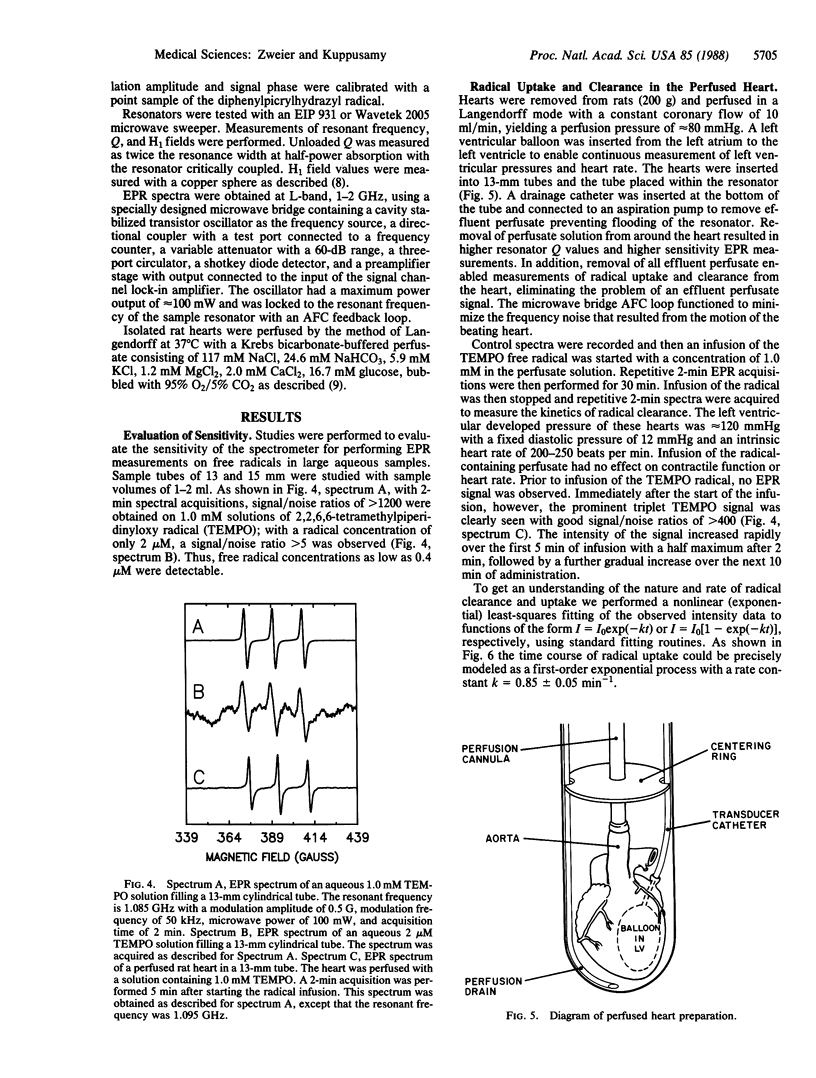
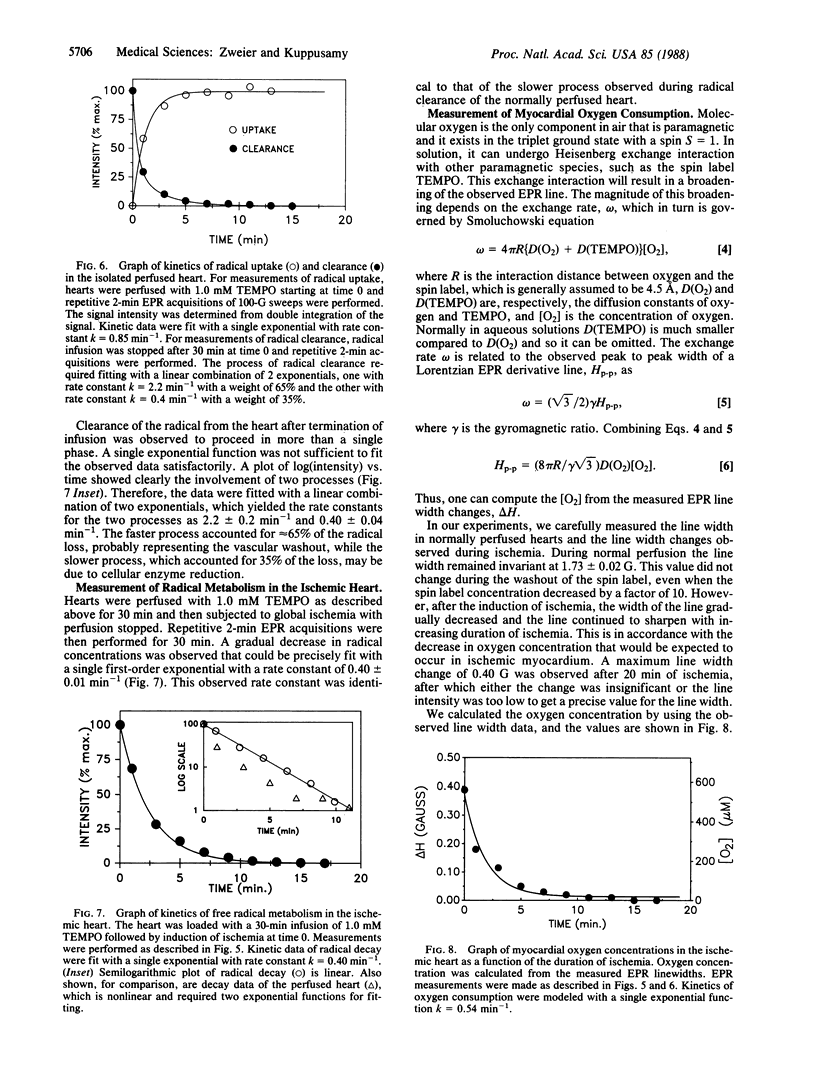
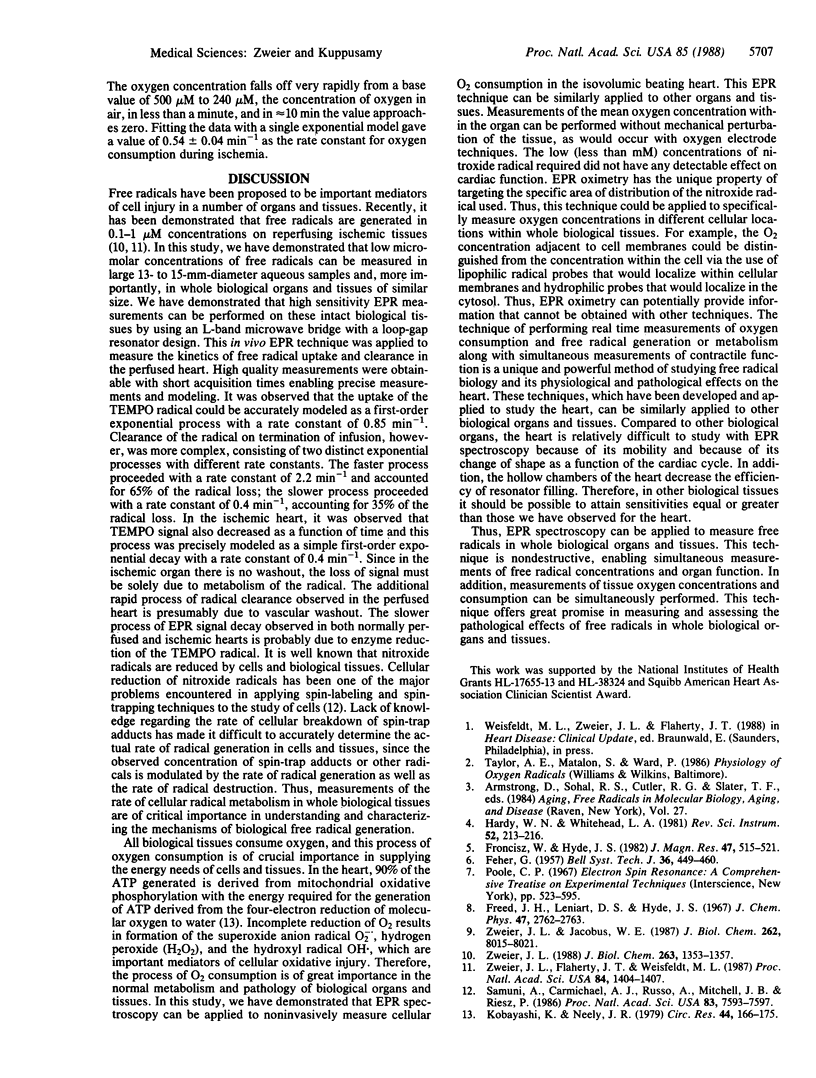
Selected References
These references are in PubMed. This may not be the complete list of references from this article.
- Kobayashi K., Neely J. R. Control of maximum rates of glycolysis in rat cardiac muscle. Circ Res. 1979 Feb;44(2):166–175. doi: 10.1161/01.res.44.2.166. [DOI] [PubMed] [Google Scholar]
- Samuni A., Carmichael A. J., Russo A., Mitchell J. B., Riesz P. On the spin trapping and ESR detection of oxygen-derived radicals generated inside cells. Proc Natl Acad Sci U S A. 1986 Oct;83(20):7593–7597. doi: 10.1073/pnas.83.20.7593. [DOI] [PMC free article] [PubMed] [Google Scholar]
- Zweier J. L., Flaherty J. T., Weisfeldt M. L. Direct measurement of free radical generation following reperfusion of ischemic myocardium. Proc Natl Acad Sci U S A. 1987 Mar;84(5):1404–1407. doi: 10.1073/pnas.84.5.1404. [DOI] [PMC free article] [PubMed] [Google Scholar]
- Zweier J. L., Jacobus W. E. Substrate-induced alterations of high energy phosphate metabolism and contractile function in the perfused heart. J Biol Chem. 1987 Jun 15;262(17):8015–8021. [PubMed] [Google Scholar]
- Zweier J. L. Measurement of superoxide-derived free radicals in the reperfused heart. Evidence for a free radical mechanism of reperfusion injury. J Biol Chem. 1988 Jan 25;263(3):1353–1357. [PubMed] [Google Scholar]


